I have often been struck by the abundance of what, at first encounter, seem to be rather mundane stories of the success, tragedy and survival observable within the natural world. These are incidents which, upon further examination, are revealed to be anything but ordinary. Often these dramas are there for the partaking and require nothing more than attentiveness on our part, though sometimes it helps to add a dollop of luck. At other times, the interactions of things wild are more subtle and seeing them requires the practice of patience, stealth, and a bit of hard work. Whichever the case, what is often revealed are behaviors or ecological interactions that are far from commonplace and are astounding in their complexity. Take the lowly earthworms for example. 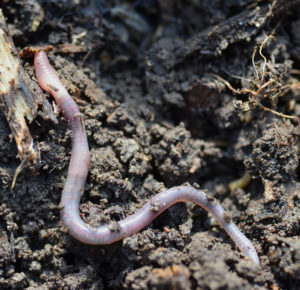 I speak of Lumbricus, Aporrectodea, Diplocardia and their ilk. Local fisher-folk may refer to them as night crawler, red worm, wriggler, or dew worm. Earthworms belong to a widely distributed and biologically successful group known as the annelid worms. They are so-called because of the division of the body into small, ring-like segments (annuli). Leeches and certain marine worms are also annelids. But it is earthworms that are involved in this story.
I speak of Lumbricus, Aporrectodea, Diplocardia and their ilk. Local fisher-folk may refer to them as night crawler, red worm, wriggler, or dew worm. Earthworms belong to a widely distributed and biologically successful group known as the annelid worms. They are so-called because of the division of the body into small, ring-like segments (annuli). Leeches and certain marine worms are also annelids. But it is earthworms that are involved in this story.
The students in my introductory biology classes were often astounded at the complexity of these little animals. I suppose they had presumed that worms were simply long, tubular creatures which were full of some sort of unidentifiable black mush. They also had likely assumed that the worm’s main purpose was to repose at the end of a fish hook. However, upon opening the body cavity of an earthworm they were amazed to find a brain, a ventral nerve cord, several hearts, a muscular pharynx, a crop, gizzard, lengthy intestine, and a collection of rather complex reproductive organs – both male and female actually. Incidentally, the student’s newly found awareness is one of the reasons I supported the idea of doing dissections in a biology or zoology class. Many argue that it is inhumane and teaches children to devalue life. I see it as the exact opposite. How could one peer into an animal, which minutes ago was perceived as nothing more than an inert rubbery tube, only to find an extreme intricacy of organ systems and thus not be more appreciative of the anatomical sophistication and physiological elegance of any living organism?
Earthworms breathe through their skin by diffusion and thus must remain moist. This is one reason their skin is so liberally impregnated with mucus glands. As a result, handling them is a bit of a sticky endeavor. They have no eyes but are quite sensitive to light via their skin cells. Staying out of the light helps prevent drying of the skin, which could lead to suffocation, and lessons the chance of being seen by a predator. Since they operate mostly in a world devoid of light, earthworms are highly sensitive to vibrations within the soil. All in all, I find them mighty impressive.
No less a scientific giant than Charles Darwin spent years studying the behavior and ecology of earthworms. In fact, the last book he published dealt with this subject. Darwin pointed out, as others have since, that earthworms may play a valuable role in nature. Their tunneling forms passageways for oxygen and water to enter the soil. Their waste products, mucus slime, and dead bodies fertilize the soil. This is well and good within a lawn or garden. However, more recent studies have shown that non-native earthworms, of which Indiana has a few, may be detrimental in forests where their overabundance can reduce soil fertility and thus diminish the number of native plant species present.
Earthworms, as you might guess, are a food source for a variety of animals. These range from the robins one sees hopping about in the yard to the moles lurking below the surface. Ah yes, moles; now we come to the crux of this story. I’m afraid moles are most often thought of by humans in the most negative of contexts. I must admit that skimming over one of their raised tunnel rooves while mowing and thus removing a huge clump of sod from a well-manicured lawn is aggravating. However moles are highly beneficial for soil aeration and water uptake in the same way as earthworms. Home owners often blame them for damage to their plants but moles are innocent. The fact is they are voracious little carnivores. Scarab beetle larvae, ants, ground beetles are all fair game. But guess what animal constitutes their favorite prey? If you said, “What are earthworms?” the Jeopardy prize is yours.
With some effort, I’ve tried to imagine the life of an earthworm. Can you too picture yourself creeping along a tiny, claustrophobic tunnel in a cool, damp world totally bereft of light? This is a Stygian realm, dark and forbidding as Miller’s Cave. There are monstrous beasts here; gigantic, furred creatures with but one thought on their minds – the securing of a nice meal of earthworm. We are blind and without defense in this gloomy world. 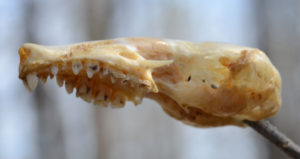 Slowly inching forward by taking mouthful after mouthful of soil; it would be fortunate that our tiny brain could not foresee the inevitable, gruesome end as three dozen sharply pointed teeth render us into mole fodder.
Slowly inching forward by taking mouthful after mouthful of soil; it would be fortunate that our tiny brain could not foresee the inevitable, gruesome end as three dozen sharply pointed teeth render us into mole fodder.
That was the image that originally existed in my mind regarding the subterranean interaction of moles and earthworms. I saw the worms as little more than slowly moving targets waiting to be consumed by the much larger, more intelligent, and vastly more powerful mole. I’m afraid I had underestimated the behavioral potentials of the earthworm and the power of natural selection to shape them. This is how I came to that conclusion.
Standing in my flower garden, I was leaning on my rake taking a well-deserved break from a morning of tilling and planting. Idly glancing down at the ground, I was quite surprised to see three earthworms suddenly appear onto the surface and begin to crawl rapidly away from the spot from which they had emerged. If one could apply the term run to animals without legs, this was such a case. They seemed to be fleeing for their lives as if in a state of terror. As I watched them speed away, another sight caught my eye. Within a foot of where the worms had emerged, the soil was making periodic, upward, pulsations. It was an eastern mole paddling its way 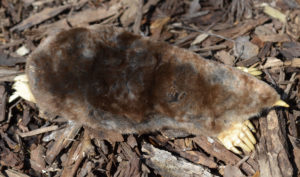 through the topsoil. I really was quite flabbergasted as I made the connection between the emergent flight of the earthworms and the sudden appearance of the mole. It was rather obvious that the worms were sensitive to the vibrations produced by the approaching mole and had taken to the surface in a last ditch effort to avoid becoming a meal. To me this seemed a remarkable piece of behavior from animals with a brain about the size of the period at the end of this sentence. If the worms recognized the vibrations as a threat, did this imply that they could remember? Didn’t this behavior suggest not only the capacity of memory but, more specifically, the ability to recall that the vibrations were produced by their arch nemesis, the mole? Did this indicate that they then had to analyze this memory and decide upon an appropriate response? In other words, were they actually capable of advanced neural integration? I don’t want to be anthropomorphic but the earthworm equivalent of memory, integration, and response borders on what I had always assumed were marks of intelligence. Darwin, in his aforementioned studies, devised experiments to observe how worms handled leaf material of different shapes. The results suggested to him that they did possess intelligence. He compared their abilities to the highly developed dexterous sense possessed by people who are deprived of sight.
through the topsoil. I really was quite flabbergasted as I made the connection between the emergent flight of the earthworms and the sudden appearance of the mole. It was rather obvious that the worms were sensitive to the vibrations produced by the approaching mole and had taken to the surface in a last ditch effort to avoid becoming a meal. To me this seemed a remarkable piece of behavior from animals with a brain about the size of the period at the end of this sentence. If the worms recognized the vibrations as a threat, did this imply that they could remember? Didn’t this behavior suggest not only the capacity of memory but, more specifically, the ability to recall that the vibrations were produced by their arch nemesis, the mole? Did this indicate that they then had to analyze this memory and decide upon an appropriate response? In other words, were they actually capable of advanced neural integration? I don’t want to be anthropomorphic but the earthworm equivalent of memory, integration, and response borders on what I had always assumed were marks of intelligence. Darwin, in his aforementioned studies, devised experiments to observe how worms handled leaf material of different shapes. The results suggested to him that they did possess intelligence. He compared their abilities to the highly developed dexterous sense possessed by people who are deprived of sight.
To me, the fact that such high powered sensory effort could be accomplished by an animal with such a primitive nervous system was stunning. What was going on within that relatively tiny accumulation of neurons? Some might say, well it’s just instinctive behavior. But, what does that mean? It only opens another series of questions. What is instinct? Yes, I know that instinct is an inherited behavior but how then does a neuron convert DNA code into a physical behavior? How does an earthworm, or a human for that matter, store the information needed for an instinctive response in a cell that for all intents and purposes is no different than a skin cell? Neurons, like skin cells, have a cell membrane within which is the cytoplasm. This is mostly water. Scattered within this protoplasm is a collection of organelles such as the nucleus which acts as the cell’s control center. There are mitochondria for energy production and ribosomes for synthesizing proteins. Where, and how, on earth does a worm store a memory of what the vibrations of a mole feel like? For that matter, how do we store the memory of a favorite song, a list of phone numbers, or the recollection of a favorite vacation spot? I’ve read that neurobiologists explain memory as the repeated use of certain nerve cell processes. I’m still left in the dark. What does that mean? If I could miniaturize myself, like the crew in Asimov’s Fantastic Voyage, and actually look at a stored memory, what would I see? Would the recollection, implanted those many years ago, of my wife’s first kiss exist as a huge organic molecule of some sort? Would it be a dendrite somewhat thicker than all the others protruding from a brain cell? Would one nerve cell, or a group of them, have a plethora of dendritic extensions compared to others? Somehow, in trying to understand the magnificence of memory and brain function, whether in earthworm or man, I arrive at an impasse. I can go no further in my attempt to comprehend either the biological or the transcendent marvel of it all. Contemplating the maneuvering of the little earthworm trio certainly opened a world of wonder for me.
So here we have it, a remarkably complex escape behavior in an animal we all too often view with total indifference, if not disdain. And lying beyond that, a doorway into the curious world of instinct, memory, and intelligence is opened. The whole earthworm/mole encounter forced me to contemplate how many other phenomena of the natural world have rested at my feet, unnoticed through simple inattention. All in all, such chance meetings serve as illustrations of the incredible complexity of interactions that make a typical ecosystem such a marvel to behold. If only we take the time, give ourselves the opportunity. Observations, which at first glance seem so simple and straightforward, will often compel us to consider in even greater depth just how multifaceted, entertaining, and extraordinary is the living world we inhabit.
A Postscript:
In investigating the fascinating phenomenon of earthworms responding defensively to the presence of moles, I ran across an interesting way in which humans capitalize on this behavior. It seems that quite a few folks were way ahead of me in being aware of how earthworms respond to vibrations in the soil. This is a very handy piece of knowledge if one is interested in collecting bait for fishing. Ever hear of worm grunting? Check it out.

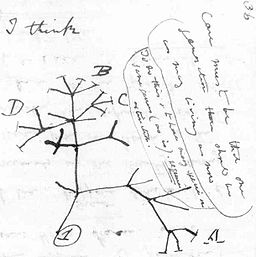
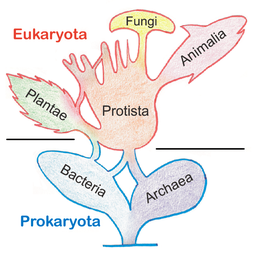
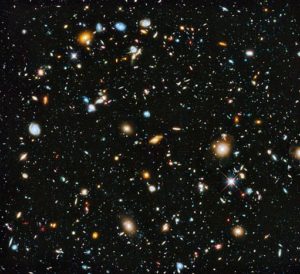 that populate the billions of galaxies of our universe. From some of these stars, the elements that, so far as we know, comprise all matter were then generated. The calcium in our bones, the nitrogen in our DNA, the gold filling in our tooth, all these have been forged from the titanic forces generated by exploding stars. Once formed, the elements have yielded molecules and compounds which have made possible the evolution of life itself. From the first primitive cells, whose precise origins are lost in the vapors of time, have arisen all of the organisms, simple to complex, which have graced the earth.
that populate the billions of galaxies of our universe. From some of these stars, the elements that, so far as we know, comprise all matter were then generated. The calcium in our bones, the nitrogen in our DNA, the gold filling in our tooth, all these have been forged from the titanic forces generated by exploding stars. Once formed, the elements have yielded molecules and compounds which have made possible the evolution of life itself. From the first primitive cells, whose precise origins are lost in the vapors of time, have arisen all of the organisms, simple to complex, which have graced the earth. land I now walked upon was once the bottom of a sea. Further east the Appalachians had risen to snow-capped heights rivaling the Rockies. Over the eons, the ravages of wind, water, and ice have reduced them to their present aspect of rounded, rolling domes – the Smoky Mountains. The very continents themselves, we now know, wander restlessly over the earth’s mantle. Viewed from space, the visage of earth today is very different than when the dry lands were merged to form the immense super-continent known as Pangaea.
land I now walked upon was once the bottom of a sea. Further east the Appalachians had risen to snow-capped heights rivaling the Rockies. Over the eons, the ravages of wind, water, and ice have reduced them to their present aspect of rounded, rolling domes – the Smoky Mountains. The very continents themselves, we now know, wander restlessly over the earth’s mantle. Viewed from space, the visage of earth today is very different than when the dry lands were merged to form the immense super-continent known as Pangaea. the arthropods also came to be the dominate invertebrates of the dry lands of the planet. Today nearly one million species of insects alone are known to science. The echinoderms, the spiny-skinned starfish and urchins, in their rich variety dispersed themselves through the earth’s vast oceans. Descendants of this group became the ancestors of the fishes which eventually claimed dominion over the waters of the world. From one group of ancient fish antecedents came the audacious back-boned creatures which first climbed from the water and into the forbidding world of air and sun. Thus, the first amphibians evolved some four hundred million years ago. Over the next three hundred million years there emerged the reptiles, the birds, the mammals. For over one hundred and fifty million years, the dinosaurs reigned as the dominant group of terrestrial vertebrates.
the arthropods also came to be the dominate invertebrates of the dry lands of the planet. Today nearly one million species of insects alone are known to science. The echinoderms, the spiny-skinned starfish and urchins, in their rich variety dispersed themselves through the earth’s vast oceans. Descendants of this group became the ancestors of the fishes which eventually claimed dominion over the waters of the world. From one group of ancient fish antecedents came the audacious back-boned creatures which first climbed from the water and into the forbidding world of air and sun. Thus, the first amphibians evolved some four hundred million years ago. Over the next three hundred million years there emerged the reptiles, the birds, the mammals. For over one hundred and fifty million years, the dinosaurs reigned as the dominant group of terrestrial vertebrates.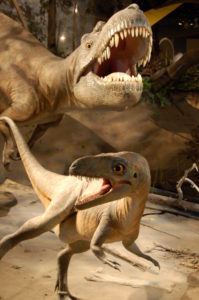 The sudden extinction of the dinosaurs allowed birds, descendants of theropod dinosaurs, to take a turn as the most biologically successful of vertebrates. They were joined in this new world order by the mammals, themselves descended from reptilian ancestors known as synapsids.
The sudden extinction of the dinosaurs allowed birds, descendants of theropod dinosaurs, to take a turn as the most biologically successful of vertebrates. They were joined in this new world order by the mammals, themselves descended from reptilian ancestors known as synapsids.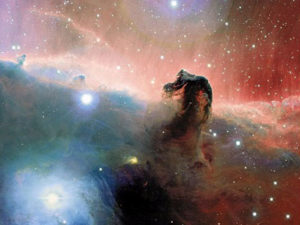 extraordinary event . . . that brings very welcome consequences. In my contemplation of life on earth, this seems to fit what has happened. I find the mere fact of my own existence, let alone the plethora of earth’s organisms past and present, extraordinary. I certainly consider the wondrous biodiversity of our planet a welcome consequence. It is vanity I suppose that compels me to also consider my own existence a welcome consequence of the unfolding universe story.
extraordinary event . . . that brings very welcome consequences. In my contemplation of life on earth, this seems to fit what has happened. I find the mere fact of my own existence, let alone the plethora of earth’s organisms past and present, extraordinary. I certainly consider the wondrous biodiversity of our planet a welcome consequence. It is vanity I suppose that compels me to also consider my own existence a welcome consequence of the unfolding universe story. Darwin was correct about a good many things. Perhaps he was in this case also.
Darwin was correct about a good many things. Perhaps he was in this case also.